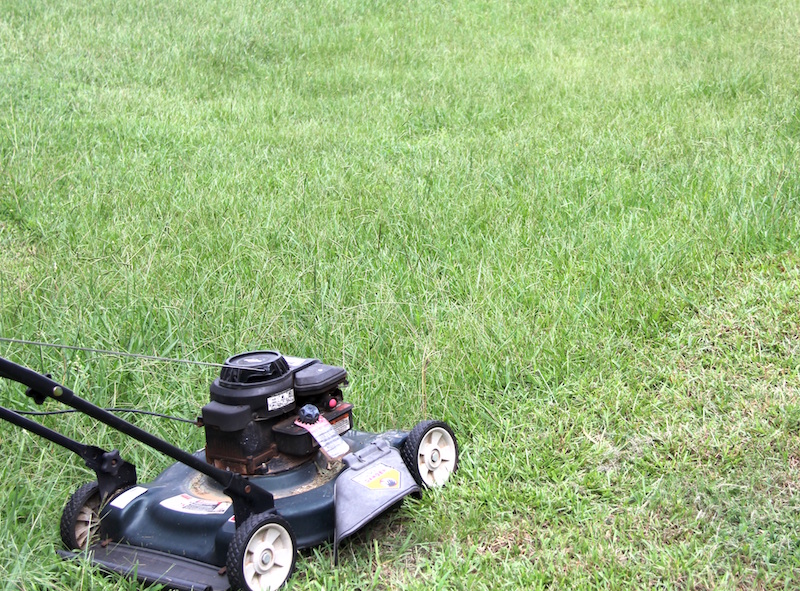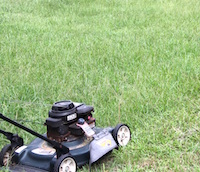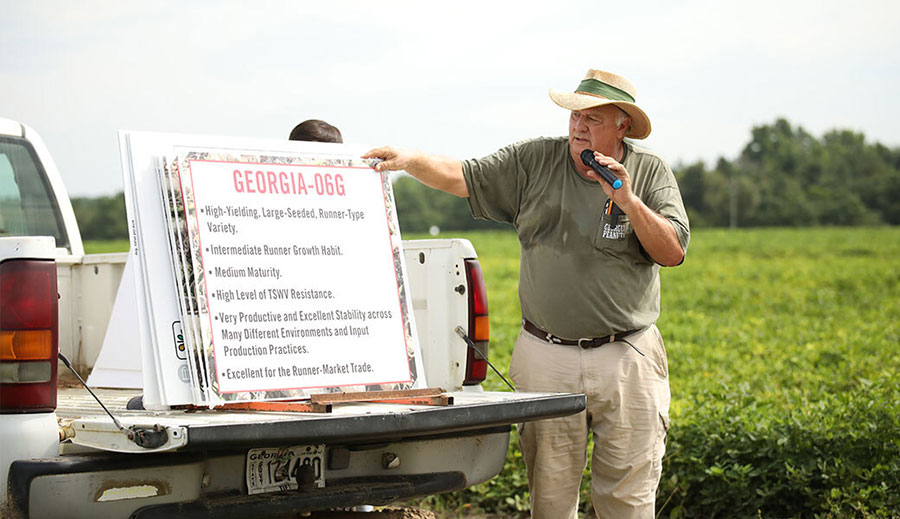Having a healthy, attractive lawn is an integral part of a beautiful home landscape. University of Georgia Cooperative Extension experts say following these five steps can help you achieve an awe-inspiring lawn this summer.
Identify your grass. Make sure you know what turfgrass species makes up your lawn. You may have inherited a lawn and not know which grass you have. Since each grass type requires different care, it is important to correctly identify that grass.
Over the last several years there are increasingly more St. Augustinegrass and centipedegrass lawns in the metro Atlanta area. Caring for a bermudagrass lawn is very different from caring for a centipedegrass lawn. For help with grass identification, contact your local UGA Extension agent at 1-800-ASK-UGA1.
Mow at the correct height. Turfgrass is healthiest and most attractive when it is mowed at the right height. That varies for each species. Tall fescue performs better when kept at a taller height than zoysiagrass. Bermudagrass can be kept rather short.
Mowing heights are especially important for homeowners in subdivisions where tall fescue was seeded in the backyard and bermudagrass was sodded in the front. This means halfway through mowing, the mower blade height needs to be adjusted. Although this extra step can be inconvenient, it will make a difference in how healthy the grass is and how each section looks.
Common turfgrass cultivars and their recommended mowing heights are as follows: bermudagrass, 1 to 1.5 inches; centipedegrass, 1 to 2 inches; St. Augustinegrass, 2 to 3 inches; zoysiagrass, 1 to 2 inches; and tall fescue, 2 to 3 inches.
Keep mower blades sharp. Lawn mower blades should be sharpened at least once a year. Each time the lawn is mowed, the grass blades are being cut. With a sharp mower blade this cut seals quickly, keeping out troublesome fungus.
A dull mower blade tears grass blades. This type of wound heals slower and gives fungus an opportunity to enter the blade and cause disease. Also, a lawn of ragged, torn blades does not look as appealing as a lawn with neatly cut grass.
Water intentionally. A lawn will give clues when it needs water. If footprints are left when you walk across the lawn, the grass probably needs water. Turfgrass wilts by turning in on itself creating a drinking-straw-like appearance. This is another clue your lawn should be watered. Turfgrass needs approximately 1 inch of water per week, ideally given in two applications.
A common problem for homeowners who use irrigation systems is overwatering. Overwatering a lawn encourages disease and can hamper root function. Make sure your irrigation system is functioning properly and consider adding a rain shutoff sensor. Inspect sprinkler heads regularly for mower damage. Also, be aware that the 2010 Georgia Water Stewardship law allows landscape irrigation any day between the hours of 4 p.m. and 10 a.m.
Aerate, aerate, aerate. Soil compaction is a problem in Georgia’s clay soils. Additionally, all the rain received this winter and spring could lead to compacted soils. So aerating early this summer may be more prudent this year than others.
A compacted soil means that the soil spaces underground that allow water, nutrients and air to move freely are limited. To get healthy, thick turfgrass on top of the soil, the grass needs healthy well-developed root systems under the soil.
Aeration opens up airways and relieves soil compaction. It can be done as often as needed, as long as the root systems are actively growing. For warm-season turf, such as zoysiagrass and bermudagrass, that means soil temperatures 65 degrees and above. Many public gardens are aerated several times a season. For homeowners, an economical way to do this is to rent an aerator with a neighbor.
For more information on caring for Georgia turfgrasses, see the website www.Georgiaturf.com.








